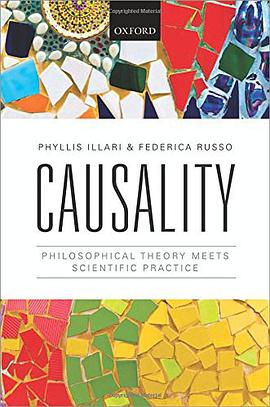Causality
豆瓣
Philosophical Theory meets Scientific Practice
Phyllis Illari / Federica Russo
简介
Head hits cause brain damage - but not always. Should we ban sport to protect athletes? Exposure to electromagnetic fields is strongly associated with cancer development - does that mean exposure causes cancer? Should we encourage old fashioned communication instead of mobile phones to reduce cancer rates? According to popular wisdom, the Mediterranean diet keeps you healthy. Is this belief scientifically sound? Should public health bodies encourage consumption of fresh fruit and vegetables? Severe financial constraints on research and public policy, media pressure, and public anxiety make such questions of immense current concern not just to philosophers but to scientists, governments, public bodies, and the general public.
In the last decade there has been an explosion of theorizing about causality in philosophy, and also in the sciences. This literature is both fascinating and important, but it is involved and highly technical. This makes it inaccessible to many who would like to use it, philosophers and scientists alike.
This book is an introduction to philosophy of causality - one that is highly accessible: to scientists unacquainted with philosophy, to philosophers unacquainted with science, and to anyone else lost in the labyrinth of philosophical theories of causality. It presents key philosophical accounts, concepts and methods, using examples from the sciences to show how to apply philosophical debates to scientific problems.
contents
I PRELUDE TO CAUSALITY
1: Problems of causality in the sciences
2: A scientific toolbox for philosophy
3: A philosophical toolbox for science
II CAUSALITY: ACCOUNTS, CONCEPTS, AND METHODS
4: Necessary and sufficient components
5: Levels of causation
6: Causality and evidence
7: Causal methods: probing the data
8: Difference-making: probabilistic causality
9: Difference-making: counterfactuals
10: Difference-making: manipulation and invariance
11: Production accounts: processes
12: Production accounts: mechanisms
13: Production accounts: information
14: Capacities, powers, dispositions
15: Regularity
16: Variation
17: Causality and action
18: Causality and inference
III APPROACHES TO EXAMINING CAUSALITY
19: How we got to the Causality in the Sciences approach (CitS)
20: Examples and counterexamples
21: Truth or models?
22: Epistemology, metaphysics, method, semantics, use
IV CONCLUSION: TOWARDS A CAUSAL MOSAIC
23: Pluralism
24: The causal mosaic under construction: the example of exposomics